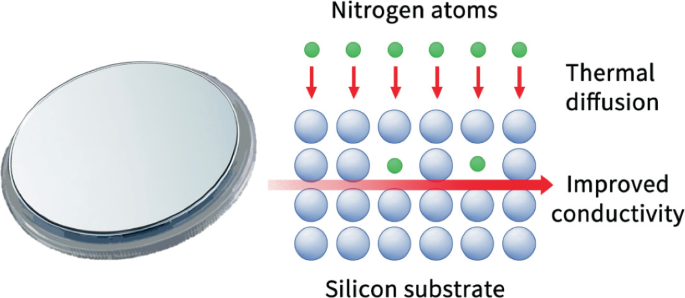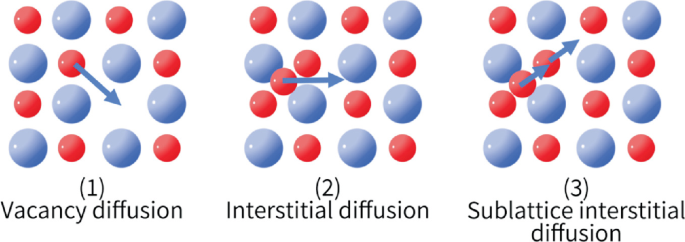Have you ever wondered why some smells spread faster in warm rooms than in cold ones? Or why a drop of ink spreads quickly in hot water but lingers longer in cold water?
The secret behind these everyday observations lies in how temperature affects the rate of diffusion. Understanding this simple yet powerful concept can change the way you see the world around you—from cooking in your kitchen to how your body absorbs oxygen.
Keep reading, and you’ll discover how temperature controls the speed of diffusion and why it matters to you in ways you might never have imagined.
Basics Of Diffusion
Diffusion is a natural process where particles move from areas of high concentration to low concentration. This movement happens without extra energy. Understanding diffusion is key to grasping how temperature affects its speed.
What Is Diffusion
Diffusion is the spreading of particles through space or a medium. It occurs in gases, liquids, and solids. Particles move randomly but tend to spread evenly over time. This process helps balance concentrations in different areas.
In living things, diffusion allows gases and nutrients to pass through cell membranes. It plays a vital role in breathing and digestion.
Factors Influencing Diffusion
Several elements affect how fast diffusion happens. These include:
- Concentration Gradient:Greater difference means faster diffusion.
- Medium:Diffusion is faster in gases than liquids or solids.
- Particle Size:Smaller particles move quicker.
- Temperature:Higher temperature increases particle movement speed.
Each factor changes how particles move and spread through space. Temperature directly impacts the energy and speed of these particles.

Credit: link.springer.com
Role Of Temperature In Diffusion
Temperature plays a crucial role in diffusion, influencing how fast molecules spread from one area to another. Understanding this relationship helps you control processes like cooking, chemical reactions, or even how your body absorbs nutrients. Let’s dive into how temperature affects molecular movement and diffusion rates.
Temperature And Molecular Movement
As temperature rises, molecules move faster. This increased movement happens because heat adds energy to the particles, making them vibrate and travel more quickly.
Imagine holding a cup of hot tea. You might notice the steam rising faster than from a cold drink. That’s because the water molecules in the hot tea are moving rapidly, escaping into the air. This faster movement means molecules spread out quicker, speeding up diffusion.
Have you ever wondered why food cooks faster in boiling water than in cold water? It’s the same principle—higher temperature means more active molecules, which helps ingredients mix and react faster.
Kinetic Energy And Diffusion Rates
Kinetic energy is the energy of motion. When temperature goes up, the kinetic energy of molecules increases, causing them to collide more frequently and with greater force.
This increase in collisions pushes molecules to spread out faster, raising the diffusion rate. Think about how sugar dissolves quicker in hot water than in cold—higher kinetic energy causes sugar molecules to move and mix more rapidly.
Knowing this can help you in practical ways: if you want to speed up a process that depends on diffusion, like marinating meat or mixing chemicals, raising the temperature can be a simple yet effective solution.
Temperature Effects In Different States
Temperature greatly influences diffusion rates across solids, liquids, and gases. Higher temperatures increase particle energy. This boost in energy speeds up the movement of particles. Diffusion happens differently depending on the state of matter. Each state reacts uniquely to changes in temperature.
Diffusion In Solids
Particles in solids are tightly packed and vibrate slowly. Increasing temperature makes these vibrations stronger. This allows atoms to move slightly more. Diffusion in solids is very slow compared to liquids and gases. Even a small rise in temperature can speed it up. But the overall movement stays limited due to the solid structure.
Diffusion In Liquids
Particles in liquids move more freely than in solids. Higher temperature makes liquid particles move faster. This faster movement increases the rate of diffusion. Liquids show a noticeable rise in diffusion speed with heat. Temperature changes can quickly affect how substances spread in liquids.
Diffusion In Gases
Gas particles move very fast and are far apart. Temperature rise causes gas particles to speed up more. This makes diffusion in gases the fastest among all states. Even small temperature increases can greatly boost diffusion rates. Gases respond strongly to temperature changes because of their loose structure.
Practical Examples
Temperature plays a key role in the rate of diffusion. It affects how fast molecules move and spread. Many real-life examples show this effect clearly. From living organisms to factories, diffusion speed changes with temperature. Understanding these examples helps explain why temperature matters so much.
Diffusion In Biological Systems
In the human body, diffusion moves oxygen and nutrients to cells. Higher body temperature speeds up this process. Cold temperatures slow down oxygen reaching tissues. Plants also rely on diffusion for gas exchange. Warm weather helps plants absorb carbon dioxide faster. Cells use diffusion to get rid of waste. Warmer conditions allow quicker removal of waste products.
Industrial Applications
Factories use diffusion in many processes, such as mixing chemicals. Heating increases molecule movement, speeding up reactions. Food preservation depends on controlling diffusion rates. Cold storage slows down spoilage by slowing diffusion of gases. In oil refining, temperature controls how fast substances mix. Proper temperature management improves efficiency and product quality.
Measuring Diffusion Rates
Measuring diffusion rates helps us understand how temperature influences molecule movement. Scientists use several techniques to track how fast particles spread. Accurate measurement is key to studying diffusion in gases, liquids, and solids. The process involves observing changes over time and comparing data at different temperatures. Precise results come from careful experiment design and clear data analysis.
Experimental Methods
One common approach uses a diffusion tube. This tube contains two substances separated by a barrier. The barrier is removed or pierced, allowing particles to mix. Sensors or color changes show how far and fast particles move. Temperature can be controlled using water baths or ovens.
Another method involves dye diffusion in liquids. A drop of colored dye is placed in water. The spread of color is recorded at set time intervals. Higher temperature speeds up color mixing. This simple test visually demonstrates diffusion rate changes.
Gas diffusion can be measured with manometers or gas sensors. These devices track pressure or concentration shifts over time. Experiments usually run in sealed chambers to maintain constant temperature.
Data Interpretation
Data from diffusion experiments often appear as graphs. One axis shows time; the other shows concentration or distance. The slope of the curve indicates diffusion speed. Steeper slopes mean faster diffusion.
Scientists calculate diffusion coefficients from data. These numbers quantify how quickly molecules spread. Comparing coefficients at different temperatures reveals temperature effects.
Repeating experiments ensures reliable data. Variations may result from measurement errors or environmental changes. Accurate interpretation requires understanding these factors.

Credit: link.springer.com
Factors Modifying Temperature Impact
Temperature plays a crucial role in the rate of diffusion, but its impact doesn’t act alone. Several factors modify how temperature affects diffusion, making the process more complex than it appears. Understanding these factors helps you predict and control diffusion in various situations, whether you’re cooking, working in a lab, or even designing materials.
Concentration Gradient
The concentration gradient is the difference in concentration between two areas. A steep gradient means particles move faster from high to low concentration, speeding up diffusion.
Temperature boosts particle movement, but if the concentration gradient is small, even higher temperatures won’t cause a big increase in diffusion rate. Imagine adding sugar to iced tea — if the tea is almost saturated, heating it won’t dissolve much more sugar quickly.
So, ask yourself: how strong is the concentration gradient in your scenario? This will shape how much temperature can influence diffusion.
Medium Properties
The type of medium—whether gas, liquid, or solid—greatly changes how temperature affects diffusion. Particles move more freely in gases and liquids than in solids.
In liquids, increasing temperature lowers viscosity, allowing particles to move faster and diffuse quicker. In solids, diffusion happens mostly through vibrations and defects, so temperature changes have a smaller effect.
Think about how perfume spreads faster in a warm room than in a cold one. That’s the medium’s properties interacting with temperature to change diffusion speed.
Frequently Asked Questions
How Does Temperature Influence Diffusion Rate?
Temperature increases kinetic energy of particles. Higher kinetic energy speeds up particle movement. This raises the rate of diffusion significantly.
Why Does Diffusion Happen Faster At Higher Temperatures?
At higher temperatures, particles move faster. Increased motion causes quicker spreading of molecules. Thus, diffusion occurs faster in warm conditions.
Can Low Temperatures Slow Down Diffusion?
Yes, low temperatures reduce particle movement. Slower particles diffuse less quickly through mediums. Therefore, diffusion rate decreases as temperature drops.
Does Temperature Affect All Types Of Diffusion Equally?
Temperature impacts all diffusion types but varies by medium. Gases show more sensitivity than liquids or solids. Diffusion rate change depends on particle type and environment.
Conclusion
Temperature plays a key role in how fast diffusion happens. Higher temperatures make particles move quicker. This speeds up the spreading of substances. Lower temperatures slow down particle movement. Diffusion takes more time in cold conditions. Understanding this helps in science and daily life.
It shows why heat affects mixing and dissolving. Simple changes in temperature can change diffusion rates a lot. This knowledge is useful in many fields. Keep these ideas in mind when studying or working with diffusion.

Home Improvement Specialist & Writer at HomeFixio
Caden Rutherford is a seasoned home improvement specialist with extensive hands-on experience in residential construction, renovations, and design. With a keen eye for detail and a passion for transforming spaces, Caden shares practical advice and expert solutions to enhance the functionality and beauty of homes. As a writer for HomeFixio, Caden combines technical knowledge with creative flair, providing readers with informative guides on everything from structural improvements to aesthetic upgrades, empowering homeowners to achieve their ideal living spaces.
